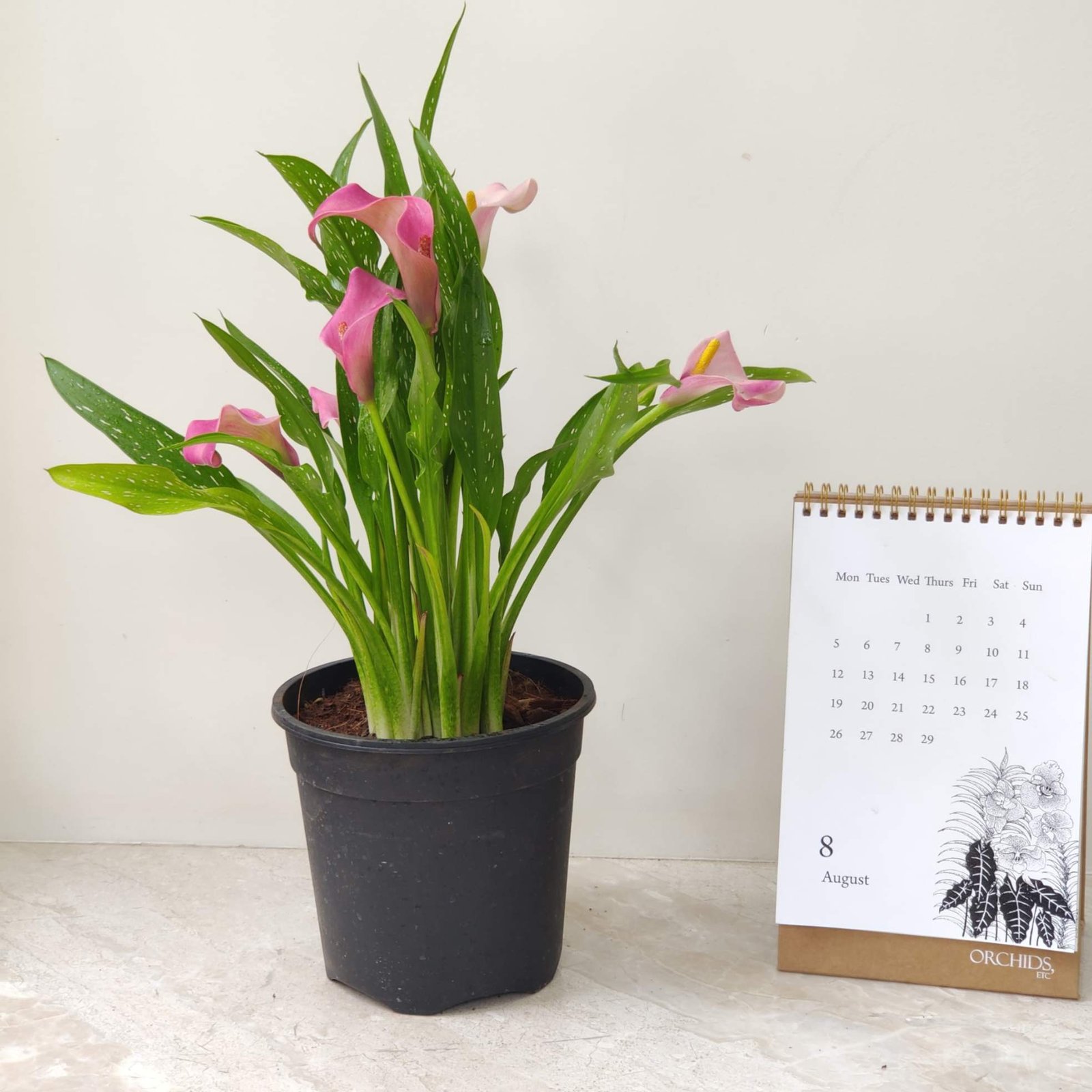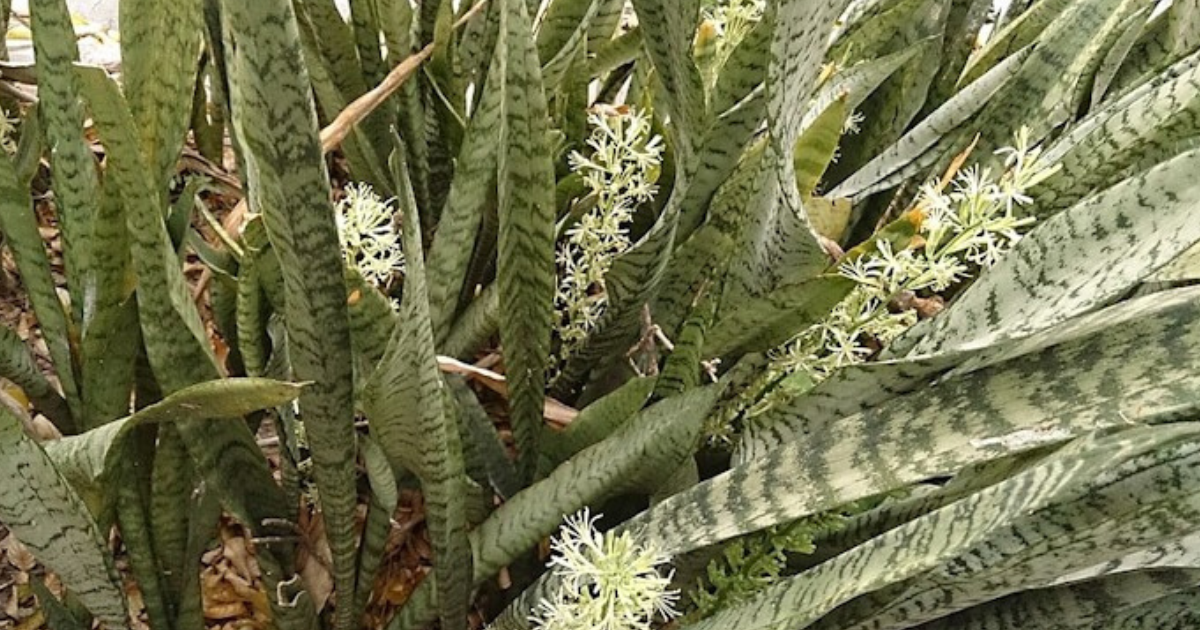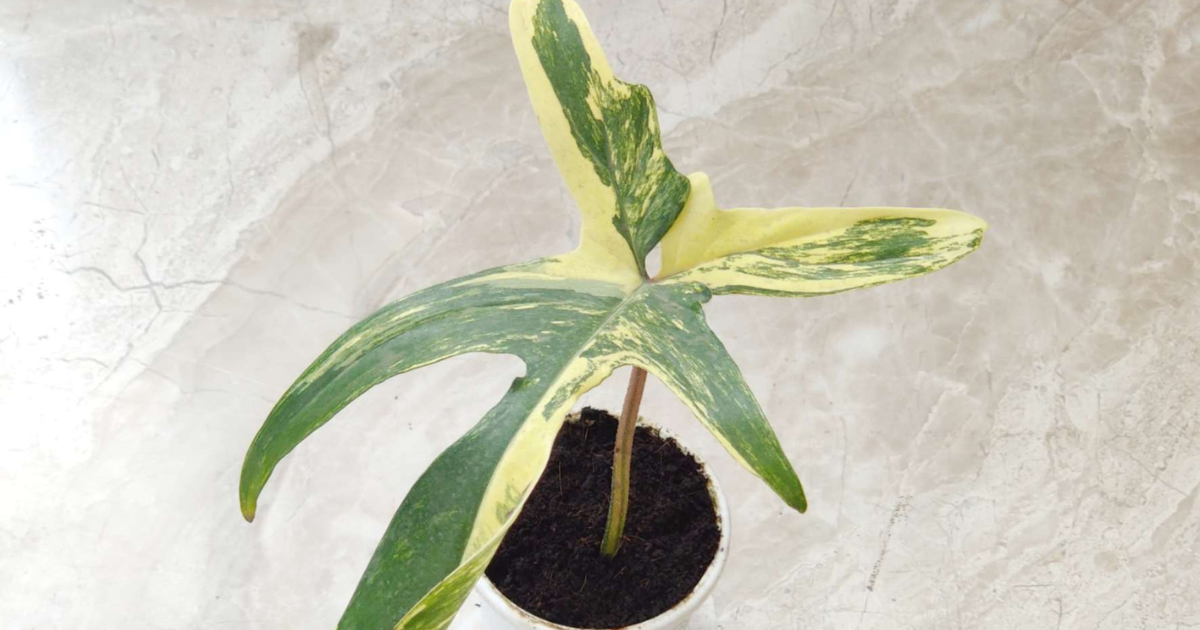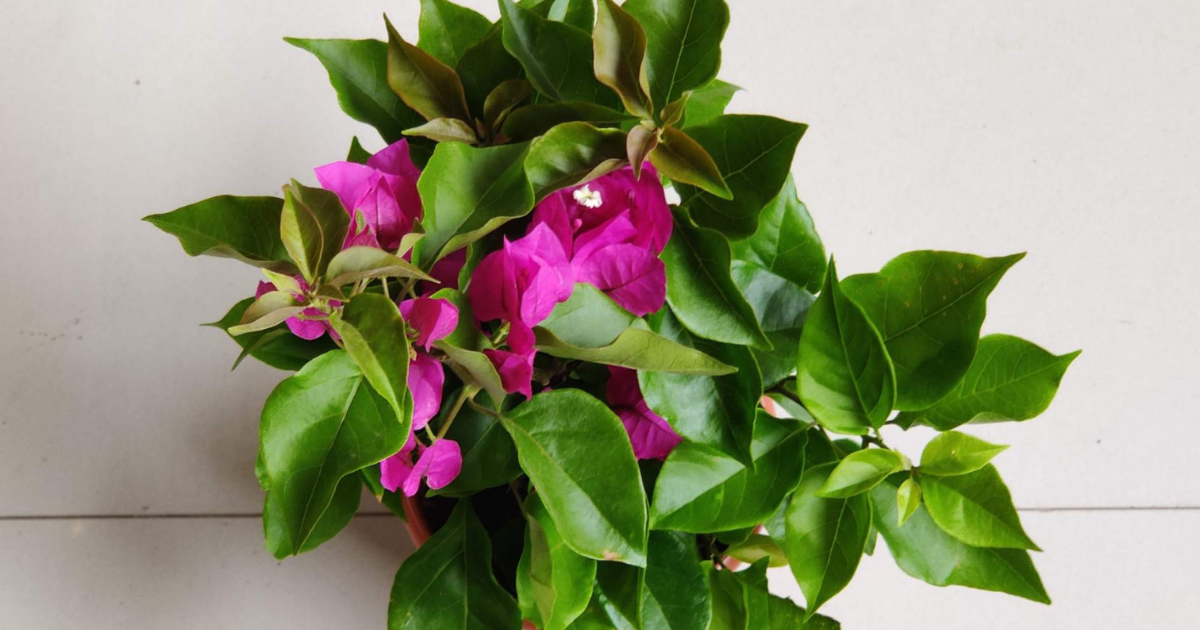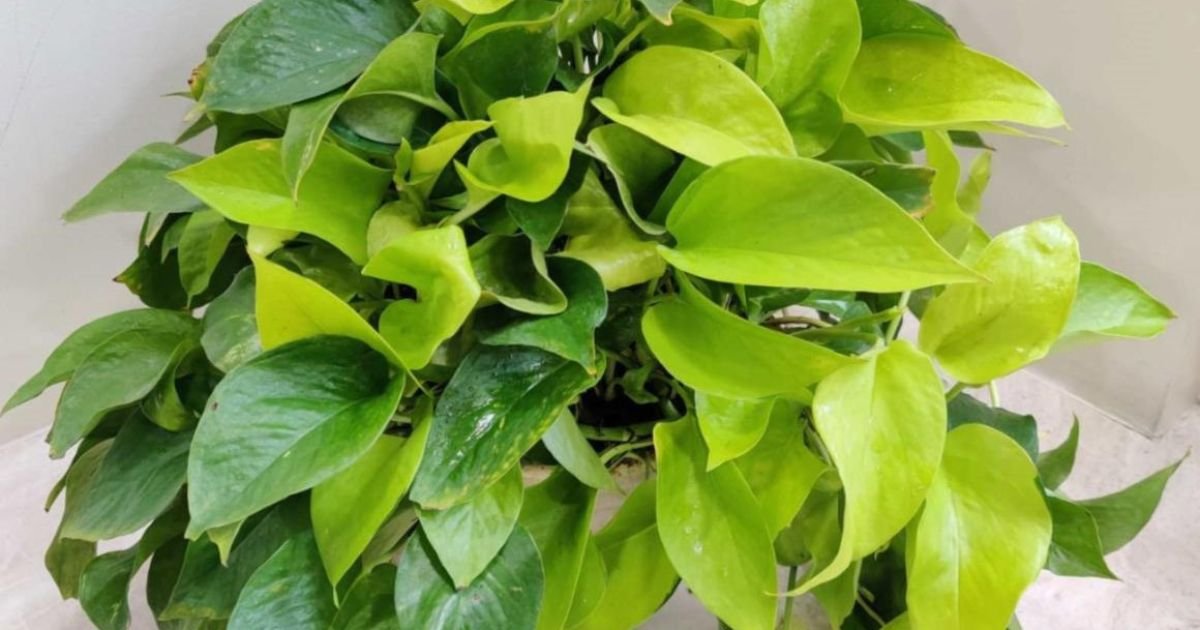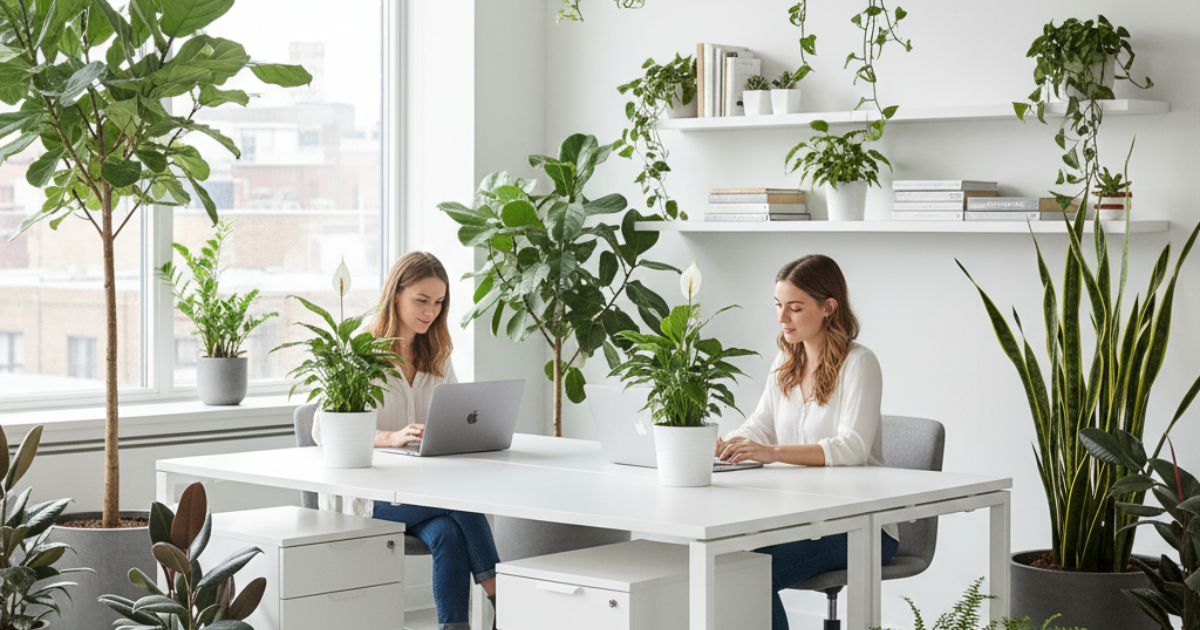Indoor plants are more than just decorative accents—they improve air quality, boost mood and productivity, and bring a refreshing touch of nature into our living spaces. However, for those who rely heavily on air conditioning, a common question arises: Is air conditioning bad for indoor plants?
The truth is, air conditioning can negatively impact houseplants by lowering humidity, creating sudden temperature fluctuations, and exposing them to cold drafts. These conditions often lead to yellowing leaves, drooping, or stunted growth—especially in popular tropical houseplants like money plants, dracaenas, and calatheas that naturally thrive in warm, humid environments.
But here’s the good news: with the right care and adjustments, your indoor plants can still thrive in air-conditioned homes and offices. In this complete guide, we’ll explore:
- How air conditioning affects indoor plants
- Clear signs your plants are stressed by AC
- The best plant care tips for air-conditioned rooms
- AC-tolerant houseplants that adapt well to dry, cool air
- Proven strategies to maintain the right humidity and temperature for healthy growth
Whether you’re a beginner plant parent or building a lush indoor jungle, this article will help you understand how to protect your plants and create a thriving indoor garden—even with the AC running all day.

Why Indoor Plants Are Important
Before diving into how AC impacts plants, it’s worth understanding why indoor plants matter so much in the first place. Beyond just looking good, houseplants provide numerous benefits that make them worth protecting:
- Purify Air – Many plants filter out toxins and pollutants, improving indoor air quality.
- Boost Humidity – Plants release moisture, reducing dryness that causes skin irritation and sore throats.
- Reduce Stress – Being around greenery lowers anxiety and promotes relaxation.
- Enhance Focus – Studies show indoor plants improve concentration, memory, and productivity.
- Beautify Spaces – Add natural beauty, freshness, and a touch of nature to any room.
- Improve Health – Reduce fatigue, headaches, and the effects of poor indoor air.
- Better Sleep – Oxygen-releasing plants like Snake Plants and Aloe Vera can improve sleep quality.
Beyond their beauty, many indoor plants act as natural air purifiers, improving air quality by filtering toxins and releasing oxygen. To dive deeper into how plants cleanse your home environment, check out our detailed guide on The Science Behind Indoor Plants as Natural Air Purifiers.
How Air Conditioning Affects Indoor Plants
Air conditioners cool indoor spaces by removing both heat and moisture from the air. While this creates comfort for humans, it can stress plants that rely on consistent warmth and humidity.
Key Environmental Changes Caused by AC
- Reduced Humidity
- Most houseplants—especially tropical species—prefer humidity levels between 40–60%.
- AC systems can drop indoor humidity to 30% or lower, leaving plants dehydrated.
- Temperature Fluctuations
- Air conditioners cycle on and off, causing swings in temperature.
- Sensitive plants, used to stable tropical climates, experience stress when exposed to these changes.
- Direct Cold Air Exposure
- Plants placed near vents may be hit by cold air blasts.
- This can damage plant cells, disrupt nutrient flow, and lead to immediate stress symptoms.
The Science Behind Plant Stress in Air-Conditioned Spaces
Plants maintain their health through transpiration, a process where they release moisture from their leaves. In dry, cool environments:
- Transpiration accelerates, causing plants to lose water faster than they can absorb it.
- Low humidity forces plants to conserve water, slowing their growth.
- Direct cold drafts may damage leaf cells, preventing proper nutrient transport.
Over time, these conditions weaken a plant’s immune system, making it more vulnerable to pests and diseases.
Signs Your Plants Are Suffering from AC
Recognizing early symptoms of AC stress allows you to take corrective action before permanent damage occurs.
Leaf-Related Symptoms
- Yellowing or fading leaves (early dehydration sign)
- Brown, crispy edges on foliage
- Premature leaf drop despite proper care
- Wilting even after watering
Growth and Flowering Issues
- Stunted growth or complete growth halt
- Failure to produce new leaves or flowers
- Bud drop—flower buds falling off before blooming
- A drooping or lifeless overall appearance
If multiple symptoms appear simultaneously, the environment is likely too harsh for your plants.
How to Protect Your Indoor Plants from Air Conditioning
The good news is that you don’t have to choose between staying cool and keeping your plants alive. With the right strategies, you can create a plant-friendly space in any air-conditioned home.
1. Strategic Plant Placement
- Keep plants away from vents. Even a few feet of distance can reduce exposure to cold blasts.
- Use naturally humid rooms. Bathrooms and kitchens provide better humidity levels.
- Avoid drafty windows or doors. Cold air from outside combined with AC can double the stress.
2. Boost Humidity Levels Around Plants
Since AC dries the air, raising humidity is critical. Here’s how:
- Pebble Trays
Fill a shallow dish with water and pebbles, then place your plant pot on top. As water evaporates, it increases local humidity without drowning roots. - Daily Misting
Spray leaves with distilled water in the morning. Avoid misting fuzzy-leaved plants like African violets, as water can cause fungal issues. - Plant Grouping
Cluster plants together to create a natural microclimate. Transpiration from each plant raises humidity for the group. - Humidifiers
The most reliable solution. A room humidifier can maintain ideal humidity levels for both you and your plants.
3. Adjust Watering Schedules
- AC makes soil dry out faster. Check soil moisture regularly.
- Use the finger test—water when the top inch feels dry.
- Avoid overwatering, which leads to root rot.
4. Create Physical Barriers
- Use glass domes, terrariums, or cloches to shield delicate plants.
- Ideal for small species like ferns or baby succulents.
Best Indoor Plants for Air-Conditioned Homes
Not all plants suffer equally under AC. Some are naturally resilient to low humidity and temperature swings.
Top AC-Friendly Plants
- Snake Plant (Sansevieria) – Nearly indestructible, tolerates low humidity.
- ZZ Plant (Zamioculcas zamiifolia) – Adaptable and low-maintenance.
- Pothos (Epipremnum aureum) – Thrives in varied light and humidity.
- Peace Lily (Spathiphyllum) – Surprisingly hardy in AC rooms.
- Air Plants (Tillandsia) – Naturally enjoy drier air.
- Spider Plant (Chlorophytum comosum) – Resilient, continues growing in dry air.
Plants to Avoid in AC Environments
- Calathea species (very humidity-sensitive)
- Areca Palm
- Crotons
- Most ferns (except Boston fern)
- Aglaonema varieties (some may adapt, but most struggle)
Advanced Protection Strategies
1. Temperature Management
- Maintain a consistent indoor range of 65–75°F (18–24°C).
- Use programmable thermostats to prevent sharp fluctuations.
2. Air Circulation
- Avoid direct AC blasts but ensure gentle airflow.
- Ceiling fans on low settings prevent fungal growth without over-drying.
3. Seasonal Adjustments
- Increase misting and watering checks in summer.
- Temporarily move sensitive plants to bathrooms during peak AC usage.
4. Using AC Condensate Water
- AC units produce distilled-like water as a byproduct.
- Safe for watering plants if collected in clean containers.
- Avoid if your system or pipes contain contaminants.
Creating Plant-Friendly Microclimates
Instead of battling your AC system, design specific zones for your plants:
- Use room dividers or shelves to shield plants from vents.
- Install smart humidifiers to regulate humidity automatically.
- Place groups of plants near sinks or windows in humid rooms.
Smart home systems now allow integration of sensors that adjust humidity and temperature specifically for plant care.
Long-Term Plant Health in Air-Conditioned Homes
To ensure plants thrive year-round, follow these long-term strategies:
1. Regular Monitoring
- Invest in a digital hygrometer to track humidity levels.
- Perform weekly inspections for leaf damage or pests.
2. Nutritional Support
- Use diluted liquid fertilizer during active growth seasons.
- Supports plants working harder to adapt to dry air.
3. Gradual Acclimatization
- Introduce new plants slowly to AC conditions.
- Start with short exposure and increase over time.
Outdoor Relocation: A Seasonal Solution
Many houseplants benefit from being outdoors during warmer months.
- Safe to move plants outside when night temperatures stay above 50°F (10°C).
- Place them in bright, indirect light (porches, under trees).
- Acclimate slowly—begin with 1 hour outside, then increase daily.
- Water more frequently, as outdoor conditions dry soil faster.
- Always protect plants from wind damage and remove saucers to allow drainage after rain.
Decorating with Ceramic Planters
While keeping your plants healthy in air-conditioned spaces is crucial, styling them in the right containers can also transform your home décor. Ceramic planters are not only durable but also add elegance and personality to any space. Here are some quick decorating tips:
- Mix & Match Colors – Pair bold ceramic pots with minimal interiors for a vibrant accent.
- Play with Heights – Arrange planters of varying sizes to create layered, eye-catching displays.
- Tabletop Accents – Use small ceramic planters with succulents or herbs on coffee tables, work desks, or shelves.
- Entryway Style – Place tall ceramic planters with leafy greens or palms at the entrance for a warm welcome.
- Group Arrangements – Cluster three to four planters together to create a stylish, cohesive indoor corner.
- Seasonal Themes – Swap plants, flowers, or decorative pebbles inside ceramic pots to match seasonal or festive décor.
With the right ceramic planters, your plants don’t just survive air-conditioned rooms—they become stunning décor elements that bring freshness and sophistication to your home.
Final Thoughts
Air conditioning doesn’t have to spell disaster for your houseplants. By understanding how AC affects them and applying simple adjustments—like better placement, humidity management, and smart plant choices—you can maintain a thriving indoor jungle while enjoying cool comfort.
Beyond purifying the air and boosting mood, many houseplants are also believed to bring good fortune and positive energy. If you’re interested in greenery that attracts wealth, health, and prosperity, check out our guide on Lucky Plants for Home.
With consistency and care, your plants will adapt to your home’s climate and continue bringing life and beauty to your living space.
FAQs
1. How does air conditioning negatively affect plants?
AC lowers humidity and temperature, causing dehydration, slowed growth, and leaf damage. Cold air directly from vents can damage plant cells.
2. What are the signs my plant is stressed from AC?
Look for yellowing leaves, crispy edges, drooping, slowed growth, or flower buds dropping before blooming.
3. What is the ideal humidity level for houseplants?
Most houseplants prefer 40–60% humidity. Air conditioning often reduces it to 30–40%, which is too low for many tropical plants.
4. How can I boost humidity for my plants in an air-conditioned home?
Use pebble trays, misting, grouping plants together, or investing in a humidifier.
5. Can I place plants directly near AC vents?
No. Direct exposure to cold drafts dehydrates plants and may cause permanent leaf damage.
6. Which plants do well in air-conditioned rooms?
Snake plants, ZZ plants, pothos, spider plants, and air plants thrive in drier air conditions.
7. Which plants should I avoid keeping in AC environments?
Calatheas, ferns (except Boston fern), and areca palms are highly sensitive to dry, cool air.
8. Is misting an effective way to help plants in AC rooms?
Misting provides a short-term boost. For long-term results, pair it with humidifiers or pebble trays. Avoid misting fuzzy-leaved plants.
9. Can I use AC condensate water for plants?
Yes, it’s similar to distilled water and free from chlorine. Ensure the collection system is clean before using.
10. Should I move plants outdoors in summer to avoid AC stress?
Yes, most plants benefit from outdoor conditions if temperatures stay above 50°F. Acclimate them gradually to avoid sunburn.

Don’t let air conditioning stop your indoor garden from thriving! With the right plant care, smart placement, and stylish ceramic planters, you can enjoy a lush, healthy, and beautifully decorated home all year round.
Shop our indoor plants and ceramic planter collection today to create a refreshing green space that stays vibrant—even in air-conditioned rooms!

